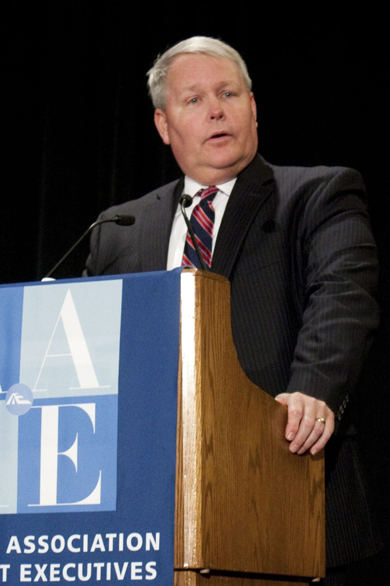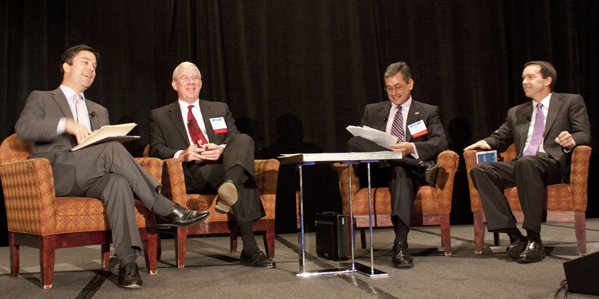 Exit Lane Monitoring seemed to be the topic du jour for many of the more than 170 registered attendees at this year’s AAAE/TSA/DHS Aviation Security Summit, held last week in Arlington, Virginia. The 13th annual event (the first summit was a result of the attacks on 9-11), saw many top Transportation Security Administration (TSA) officials participating, including a key note presentation by John Halinski, Deputy Administrator for the TSA (shown at right), who said the TSA would save $88.1 Million in FY2014 by turning over responsibilities of exit lane monitoring to airports.
Exit Lane Monitoring seemed to be the topic du jour for many of the more than 170 registered attendees at this year’s AAAE/TSA/DHS Aviation Security Summit, held last week in Arlington, Virginia. The 13th annual event (the first summit was a result of the attacks on 9-11), saw many top Transportation Security Administration (TSA) officials participating, including a key note presentation by John Halinski, Deputy Administrator for the TSA (shown at right), who said the TSA would save $88.1 Million in FY2014 by turning over responsibilities of exit lane monitoring to airports.
Halinski went on to say that airport security is a shared responsibility and exit lane monitoring is not a screening function but one of access control and suggested that two-thirds of airports are already in control of exit lanes. Mark Crosby, Chief of Security and Public Safety for Portland International Airport, who later questioned the two-thirds comment and what exactly that represented, asked how do we get around the feeling that you’re [TSA] cramming something down our throat!
John Sammon, Assistant Administrator, Security Policy and Industry Engagement, TSA, backstopped the exit lane decision, telling attendees during a TSA Leadership Roundtable that the policy change was budget driven. Joining Sammon on the Roundtable were John Sanders, Assistant TSA Administrator, Security Capabilities and Pete Garcia, Director, Compliance, Security Operations, TSA.

(Photo – Panel members from left are, Carter Morris, AAAE, John Sammon, Pete Garcia, and John Sanders.)
During a panel discussion on roles and responsibilities for exit lane monitoring later that day, Crosby told attendees that this strategy was bad policy. David Berg, Senior Vice President, Airlines for America said he was disappointed in the way this process has played out and that TSA has “reverted to past practice.”
Panel members felt the process the TSA took was disappointing and agreed that no good response from TSA was given as to why they didn’t sit down with industry representatives early on to discuss the change in strategy.
The policy change, scheduled to go into effect the first of the year, is being challenged by some airports. TSA has 30 days to respond to those letters. It was hinted, that airports may be granted some flexibility on a start date on a case-by-case basis, however Crosby responded, “an extra month’s time doesn’t mean anything.”
Although the topic seemed to dominate, ‘exit lane monitoring’ wasn’t the only topic on the agenda that stimulated questions. Risk Based Security (RBS), Intelligence and Analysis, Customs and Border Protection, General Aviation Security and Security Technology also played a part in what appeared to be a successful day and one-half summit.



